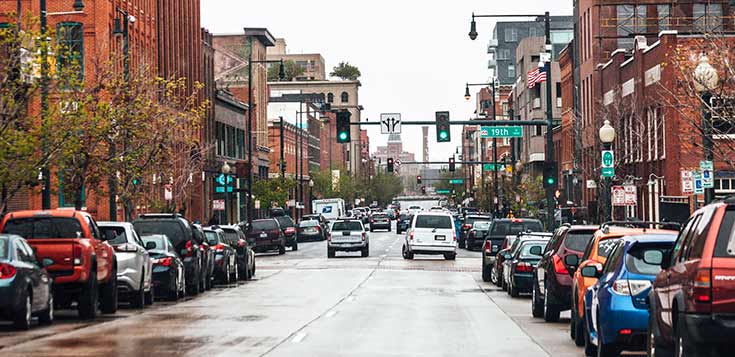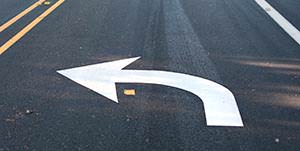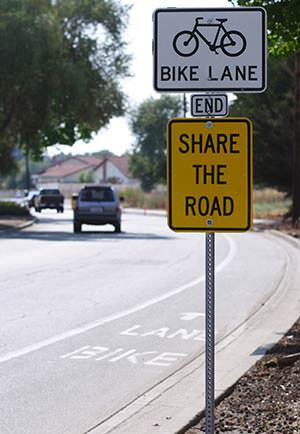victims for over 25 years.
Denver’s Dangerous Roads – And How You Can Stay Safe
 In its July 2017 issue, 5280 Magazine published a story titled, “The Most Dangerous Thing You Do Today.” The story centers around the idea that Denver’s roads are getting more dangerous due to our growing population, and our roads simply weren’t designed for such heavy use from so many types of transportation: cars, bikes, motorcycles, buses, light rail trains and pedestrians.
In its July 2017 issue, 5280 Magazine published a story titled, “The Most Dangerous Thing You Do Today.” The story centers around the idea that Denver’s roads are getting more dangerous due to our growing population, and our roads simply weren’t designed for such heavy use from so many types of transportation: cars, bikes, motorcycles, buses, light rail trains and pedestrians.
Did you know that more than 600 people died on Colorado roads in 2016, representing an increase of 10.5% from 2015? In Denver, traffic fatalities have gone up every year since 2005.
The magazine quotes Colorado Department of Transportation (CDOT) executive director Shailen Bhatt, who says, “It’s not acceptable to me that we’re likely going to have 700 deaths on our roadways this year. We have a system that is killing hundreds of Coloradans. We should not accept one death.”
This week, I thought I’d share some of the hazards that the magazine points out and then give you a Denver personal injury attorney’s take on how you can stay safer on Denver’s roads.
Denver Dangerous Roads are Real
Avoid Left-Hand Turns
 5280 Magazine reports that UPS encourages its drivers to avoid left-hand turns because they are often the most dangerous move that people make as they drive or ride their motorcycles from point A to point B.
5280 Magazine reports that UPS encourages its drivers to avoid left-hand turns because they are often the most dangerous move that people make as they drive or ride their motorcycles from point A to point B.
Here are some of the things that Denver drivers were doing when they crashed:
- 19.9% were making a left-hand turn
- 7.2% were changing lanes
- 7.1% were making a right-hand turn
- 6.3% were braking or slowing down
- 1% were making a u-turn
I’ve written extensively about the dangers of making left-hand turns across oncoming traffic. How many times have you sat in the left-hand lane, chomping at the bit to scoot across so that you can continue your journey? We’ve all been stuck out in the middle of an intersection, trying to make a left turn, when the light turns yellow. Suddenly, we go for it, hoping the oncoming cars aren’t also “going for it” on the yellow.
I’ve seen so many accidents caused by left-hand turns that I no longer creep out into the intersection. I’m the annoying guy in front of you who waits until it’s so clear that a toddler could walk safely across. If that window never comes, I simply wait for the next arrow. Left-hand turns can cause catastrophic damage to oncoming drivers, their cars, your car and all of your passengers… not to mention to you.
If we all avoided dangerous left-hand turns, I’m convinced the Denver car accident fatality rate would drop.
Which brings me to another defensive driving maneuver that I should mention, even though the magazine doesn’t.
Walk and ride as though you’re invisible to others.
Assume You’re Invisible
 Whether you’re driving a tank or just riding your bicycle, you need to assume that you are invisible to other people on the road. If you drive, ride or walk like you’re invisible to others, you are more likely to avoid putting yourself into a dangerous situation.
Whether you’re driving a tank or just riding your bicycle, you need to assume that you are invisible to other people on the road. If you drive, ride or walk like you’re invisible to others, you are more likely to avoid putting yourself into a dangerous situation.
Over the years, I’ve grown convinced that people don’t mentally process all of the things that they are seeing as they drive. For example, if you live in an urban area and the common forms of transportation near your home or workplace include cars and motorcyclists, then you are more likely to see them as you drive. But if you head downtown, where there are light rail trains and pedestrians, your brain isn’t trained to “see” those people or moving objects and you are more likely to miss the signals that you need to slow down or stop.
Likewise, if you live down in Highlands Ranch, where getting from A to B often involves a multi-lane highway, you certainly wouldn’t be looking for a pedestrian or bicyclist on those roads.
So, the lesson here is that other people aren’t looking for YOU! Drive, walk and ride as though you’re invisible to others to avoid putting yourself in a dangerous situation.
If you are the victim in a car crash and you weren’t wearing a seat belt, you will likely get less money for your damages and medical costs.
Wear Your Seatbelt… and a Helmet
The 5280 Magazine article reports that “16% of Colorado drivers don’t click it, even though seat belts can reduce fatalities from crashes by 45%.”
I’ll give you another reason to wear your seatbelt (though you shouldn’t need another reason): If you are the innocent victim in a car crash and you weren’t wearing a seat belt, you will likely get less money from the other driver for your damages and medical costs.
Police officers will note on the accident report whether drivers were belted. That information can be used against innocent victims of car accidents to limit or negate their claims. If your case goes to court, there is a mandated jury instruction that requires the judge to tell the jury to limit the amount of damages you can claim if you weren’t wearing a seatbelt! You may very well receive nothing for your pain and suffering, which could total half of the damages you’re claiming, or more, depending on the extent of your injuries.
And the same is true for motorcyclists riding without helmets who are innocent victims in accidents. You will likely be out of a large sum of money due to your choice not to protect your head.
Get Used to Sharing the Road
 Denver is trying several approaches to solving our traffic congestion and traffic fatalities. One rather controversial step they’ve taken is the South Broadway bike lane. We all know that it would be better if there were fewer cars on the road. But when we get slowed down by a bicyclist, we get frustrated. Sometimes, that frustration can lead to dangerous maneuvers to avoid or get by the bicyclist.
Denver is trying several approaches to solving our traffic congestion and traffic fatalities. One rather controversial step they’ve taken is the South Broadway bike lane. We all know that it would be better if there were fewer cars on the road. But when we get slowed down by a bicyclist, we get frustrated. Sometimes, that frustration can lead to dangerous maneuvers to avoid or get by the bicyclist.
The South Broadway bike lane provides a 10-foot lane solely for two-way bike traffic. There are even permanent road markings and signals just for bikers. Drivers have said that the extra signals are a distraction, making driving next to bikers more dangerous. But overall, the new approach to busy urban transportation appears to be a success.
My take? We’d better get used to sharing the road. Denver is projected to grow tremendously in the next 10 years and, I don’t know about you, but I don’t want all of those people using cars every morning and afternoon to get to work and home. We all need to embrace, experience and champion new modes of transportation in Denver, as we cautiously share the road with everyone else who is simply trying to get from Point A to Point B!
Want to see more on dangerous roads in Colorado? Take a look at our article on The Most Dangerous Roads in Colorado (they aren’t what you think).
Free Consultation
Search For
Recent Articles
- Pedestrian Hit by SUV in Denver’s Berkeley Neighborhood
- Cyclist Injured in Early Morning Crash with SUV in Denver’s Baker Neighborhood
- Serious Injury in Careless Driving Incident at E Alameda Ave and S Ivy St
- Motorcycle Involved in Non-Fatal Rear-End Collision on I-25 Near W 6th Ave
- Possible DUI Incident Reported in East Colfax
Categories
- Arvada
- Aurora
- Auto Accident eBook
- Auto Insurance
- Bicycle
- Bicycle/Motorcycle Accidents
- Bodily injury
- Car accidents
- Centennial
- Colorado
- Colorado Legislature
- community
- Denver
- Denver Metro Motor Vehicle Accidents
- distracted driving
- DUI Accidents
- Englewood
- Events
- Flood Insurance
- Fort Collins
- Highlands Ranch
- Hit and Run
- In The News
- insurance companies
- Lakewood
- Littleton
- Marijuana DUI
- Motorcycle Accidents
- Motorcycle Insurance
- Motorcycle Law eBook
- Motorcycles
- Newsletter
- Pedestrian
- Personal Injury Law
- Press Release
- Safe Driving
- Safety
- Scooters
- technology
- Tips
- Uncategorized
- vibrio vulnificus bacteria
- Videos
- Westminster
- Winter Driving
- Wrongful Death
Archive
- July 2025
- June 2025
- May 2025
- April 2025
- March 2025
- February 2025
- January 2025
- December 2024
- November 2024
- October 2024
- September 2024
- August 2024
- July 2024
- May 2024
- April 2024
- March 2024
- February 2024
- January 2024
- December 2023
- November 2023
- October 2023
- September 2023
- August 2023
- July 2023
- June 2023
- May 2023
- April 2023
- March 2023
- February 2023
- January 2023
- November 2022
- September 2022
- April 2022
- March 2022
- February 2022
- January 2022
- December 2021
- November 2021
- October 2021
- September 2021
- August 2021
- July 2021
- June 2021
- May 2021
- April 2021
- January 2021
- December 2020
- November 2020
- October 2020
- September 2020
- August 2020
- July 2020
- June 2020
- May 2020
- April 2020
- March 2020
- February 2020
- January 2020
- December 2019
- November 2019
- October 2019
- September 2019
- August 2019
- July 2019
- June 2019
- May 2019
- March 2019
- February 2019
- January 2019
- December 2018
- November 2018
- October 2018
- September 2018
- August 2018
- July 2018
- June 2018
- May 2018
- April 2018
- March 2018
- February 2018
- January 2018
- December 2017
- November 2017
- October 2017
- September 2017
- August 2017
- July 2017
- June 2017
- May 2017
- April 2017
- March 2017
- February 2017
- January 2017
- December 2016
- November 2016
- October 2016
- September 2016
- August 2016
- July 2016
- June 2016
- May 2016
- April 2016
- March 2016
- February 2016
- January 2016
- December 2015
- November 2015
- October 2015
- September 2015
- August 2015
- July 2015
- June 2015
- May 2015
- April 2015
- February 2015
- November 2014
- October 2014
- September 2014
- July 2014
- June 2014
- May 2014
- April 2014
- March 2014
- February 2014
- January 2014
- October 2012
- September 2012
- August 2012
- July 2012
- February 2012
- March 2011
- October 2010